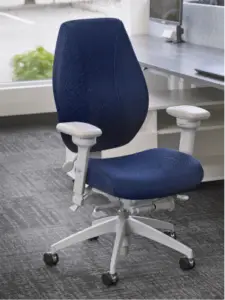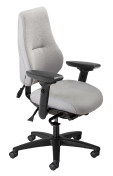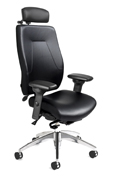The last article outlined that CSA Z412-17 (Office Ergonomics: An Application Standard for Workplace Ergonomics) applies to all office users in office workspaces in both new and existing buildings in Canada.
This article describes the Ergonomics Process and highlights ways that architects, designers, facility planners, building service providers and purchasing personnel can apply ergonomics when designing new office work systems, renovating existing office work systems, or procuring new office furniture, accessories, and equipment.
This information is important since CSA Z412-17 contains “shall” statements for the requirements that an organization and/or those employed by the organization are obliged to meet to comply with the standard
Important concepts used in CSA Z412-17
CSA Z412-17 adopts the approach outlined in CSA Z1004-12 where ergonomics is incorporated into an occupational health and safety management system and into the design or redesign of offices and the work processes and work systems used within offices.
Clause 4 specifies requirements for the Ergonomics Process. Clause 5 specifies how Ergonomics is applied to office work systems.
The ergonomics process
The Ergonomics Process is based on a four-step method for continuous improvement (“Plan-Do-Check-Act”) as used in CAN/CSA-Z1000 and CSA Z1004. The P-D-C-A approach described in Clause 4 of CSA Z412-17 is applied to ensure that the Ergonomics Process used in an organization is sustainable and efficient. It provides the foundation on which the Application of Ergonomics (Clause 5) can take place throughout the workplace.
Both workers and management are essential to the Ergonomics Process and have important responsibilities.
Management provides leadership, ensures that the Ergonomics Process is established in the office work environment and documents the commitment, leadership, and participation in the development, implementation, and maintenance of an effective Ergonomics Process.
The participation of workers (and their representative) is required to ensure ergonomics is implemented, to determine that appropriate preventive measurements are taken, and to assess the effectiveness of the changes, and to enable continual improvement.
In addition, there is the requirement that persons competent in ergonomics are to be involved in the design and redesign of office work systems (Clause 4.2.5 in CSA Z412-17)
Application of ergonomics
The Application of Ergonomics comes under the “Do” section in the “Plan-Do-Check-Act” process. The importance of having user trials for the evaluation of preliminary designs and as part of the procurement of furniture, accessories, and equipment and other products and supplies is a feature of how ergonomics is applied.
Application of ergonomics in design and operation
A key requirement is the application of Ergonomics in design and operation (Clause 5.3). For example, the organization needs to apply ergonomics at all stages in the design of work systems including: planning and anticipation; detailed design process; installation and training; operation and maintenance; and decommissioning and disposal.
Persons competent in ergonomics are to be involved at all stages in the design of work systems.
Procurement
Every organization should establish a process to evaluate furniture, accessories, equipment, other products, supplies, raw materials, and services that are being considered for procurement. This process prevents injuries since it controls risk before the items to be procured are brought into the workplace. It optimizes system performance by identifying and eliminating potential hazards, enhances the health, safety, and well-being of employees and actively demonstrates a culture of safety within the organization.
When developing the specifications for the purchase of a product it is essential to have the active participation of employees who will be using the product and again in the evaluation of the product after it is procured.
It is easy to include employees in a procurement process for the evaluation and selection of office task chairs. Guidance on the ergonomics criteria for office task chairs will be described in subsequent articles.
Stay informed!
You can purchase your copy of CSA Z412-17 here
Disclaimer
The views and professional opinions expressed in this article are those of Geoff Wright and do not necessarily reflect the opinion or views of any organizations that Geoff Wright may be associated or affiliated with. It is intended solely for educational purposes and is written to give general information and provide a general understanding of ergonomics. Every attempt is made to ensure accuracy and reliability of the information provided. The information may not be applicable or suitable to your circumstances and should not be a substitute for advice from a certified professional ergonomist and/or other qualified professionals.








